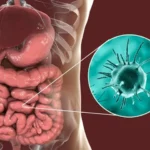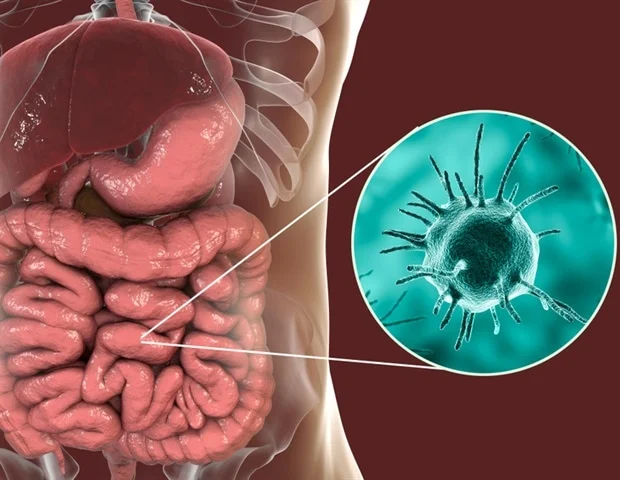Nitazoxanide 500 mg is a widely used antiparasitic and antiviral medication that has gained popularity for its effectiveness in treating diarrhea and gastrointestinal infections. Approved for both adults and children, Nitazoxanide offers a unique approach to fighting not just parasitic organisms, but also certain viral infections, making it one of the few medications with broad-spectrum utility in infectious disease treatment.
In this article, we’ll explore how Nitazoxanide works, what infections it treats, how it helps with diarrhea, and what patients need to know before using it.
💊 What Is Nitazoxanide?
Nitazoxanide 200 mg is an antiprotozoal and antiviral medication. It was originally developed to treat infections caused by protozoa (tiny single-celled parasites) and helminths (worms), but it has since shown effectiveness against certain viral infections as well.
Brand names: Alinia, Nizonide
Available forms: Tablets (500 mg), Oral suspension (100 mg/5 mL)
FDA approval: Approved for use in the U.S. since 2002
🦠 What Infections Does Nitazoxanide Treat?
Nitazoxanide is primarily used to treat gastrointestinal infections that cause acute diarrhea, especially in cases where the cause is protozoal or viral. These include:
✅ Approved Uses
Cryptosporidiosis (Cryptosporidium parvum): A parasitic infection commonly spread through contaminated water.
Giardiasis (Giardia lamblia): A waterborne parasite that causes diarrhea, bloating, and stomach cramps.
🔬 Off-label or Emerging Uses
Rotavirus and Norovirus: Viruses that cause acute gastroenteritis, especially in children.
Clostridioides difficile (C. diff): Nitazoxanide has shown potential in managing mild to moderate C. diff infections.
Influenza: Research has shown some antiviral activity, though not a first-line treatment.
COVID-19 (under study): Investigated for its broad antiviral effects, though more research is needed.
🚽 How Nitazoxanide Helps Treat Diarrhea
1. Targets the Root Cause
Most antidiarrheal medications simply manage the symptoms (e.g., slowing gut movement), but Nitazoxanide works by eliminating the infection causing the diarrhea. Whether it’s a parasite like Giardia or a virus like rotavirus, Nitazoxanide attacks the organism itself.
2. Blocks Energy Production in Pathogens
Nitazoxanide is converted in the body into tizoxanide, its active form. Tizoxanide interferes with the pyruvate:ferredoxin oxidoreductase (PFOR) enzyme that parasites use to make energy. By blocking this enzyme, it disrupts their metabolism, leading to their death and clearance from the body.
3. Antiviral Mechanism
Nitazoxanide inhibits viral replication by blocking the maturation of viral proteins. This slows the spread of the virus in the gut, allowing the immune system to regain control and resolve the infection more quickly.
4. Reduces Duration and Severity
Studies show that Nitazoxanide can reduce the duration of diarrhea in both children and adults by up to 24–48 hours, especially when started early.
🧬 How Nitazoxanide Differs From Antibiotics
While antibiotics target bacterial infections, Nitazoxanide works on protozoa and viruses, making it effective even when antibiotics would fail. It does not promote antibiotic resistance and has a favorable safety profile, especially in regions with frequent diarrheal outbreaks.
👶 Nitazoxanide for Children
Diarrhea is one of the leading causes of illness and death in children worldwide. Nitazoxanide is:
Approved for children aged 1 year and older
Available in a pleasant-tasting oral suspension
Effective against common childhood parasites like Giardia and Cryptosporidium
Pediatric studies show that children treated with Nitazoxanide experience faster symptom relief, fewer complications, and improved hydration status.
📈 Effectiveness in Clinical Trials
🔹 Giardiasis:
A 3-day course of Nitazoxanide clears the parasite in over 80% of cases.
🔹 Cryptosporidiosis:
Especially useful in immunocompetent children, with diarrhea resolving within 3–4 days in most cases.
🔹 Rotavirus:
In some studies, Nitazoxanide shortened diarrhea duration by 1–2 days compared to placebo.
💡 Advantages of Nitazoxanide
Broad-spectrum: Works on parasites and some viruses
Well tolerated: Mild side effects
Convenient dosing: Usually a short 3-day course
Safe for children
Useful where lab testing is delayed: Empirical treatment option in diarrhea-prone areas
⚠️ Side Effects and Precautions
While Nitazoxanide is generally safe, a few side effects may occur:
Common Side Effects:
Nausea
Headache
Abdominal pain
Yellow discoloration of urine (harmless)
Rare Side Effects:
Allergic reactions
Rash
Dizziness
Who Should Avoid It?
Infants under 1 year (not approved)
People with known hypersensitivity to the drug
Use caution in pregnant or breastfeeding women (consult your doctor)
🕐 Dosage Guidelines
🔹 Adults and Teens (12 years and older):
500 mg every 12 hours for 3 days
🔹 Children (1–11 years):
Dose based on weight (typically 100–200 mg every 12 hours for 3 days)
Always follow the prescribing information and consult your healthcare provider for accurate dosing.
🍽️ How to Take Nitazoxanide
Take with food to improve absorption.
Continue the full course even if symptoms improve early.
Oral suspension should be shaken well before measuring.
🛒 Where to Buy Nitazoxanide
Nitazoxanide is available with a prescription and can also be purchased from online pharmacies.
💡 Tip: You can buy Nitazoxanide 500 mg online from Dose Pharmacy and save 5% using code: FLAT5.
🧾 Final Thoughts
Nitazoxanide is a powerful, fast-acting solution for treating diarrhea caused by parasitic and viral infections, especially in areas where such conditions are common. Unlike antibiotics, it tackles organisms that are often missed and provides rapid relief, making it ideal for both adults and children.
Whether you’re managing travel-related diarrhea, childhood parasitic infections, or viral gastroenteritis, Nitazoxanide offers a safe and effective path to recovery. Always consult your healthcare provider before starting treatment and complete the full course as prescribed.















Leave a comment